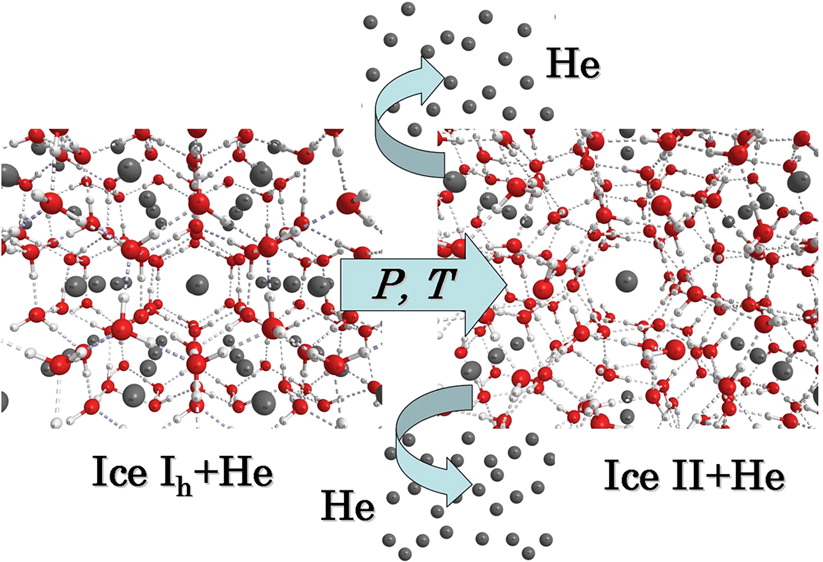Stability and Composition of Helium Hydrates Based on Ices Ih and II at Low Temperatures
슈퍼관리자
2021-05-21
Stability and Composition of Helium Hydrates Based on Ices Ih and II at Low Temperatures
-
Authors :
R. V. Belosludov, Y. Y. Bozhko, O. S. Subbotin, V. R. Belosludov, H. Mizuseki, Y. Kawazoe, and V. M. Fomin
-
Journal :
J. Phys. Chem. C
-
Vol :
118
-
Page :
2587-2593
-
Year :
2014

Abstract
The recently developed approach describing host lattice relaxation, guest–guest interactions and the quantum nature of guest behavior (Belosudov, R. V.; Subbotin, O. S.; Mizuseki, H.; Kawazoe, Y.; Belosludov, V. R. J. Chem. Phys. 2009, 131, 244510) has been used to derive the thermodynamic properties of helium hydrates based on ices Ih and II. The p–T phase diagrams of the helium hydrates in different ices are presented for a wide range of pressures and temperatures, and the structural transitions between pure ice Ih and ice II as well as between ice Ih-based helium hydrate and ice II-based helium hydrate have been found to be in agreement with the available experimental data. The “ice II-based helium hydrate–ice Ih-based helium hydrate” equilibrium shifts toward the higher pressures in comparison with the line of “ice II–ice Ih” equilibrium. The degrees of interstitial space filling by helium in ice Ih-based and ice II-based hydrates decrease with increasing temperature and lowering of pressure. It is demonstrated that the helium filling in ice Ih proceeds more slowly than in ice II. However, the mole fraction of helium in the hydrate based on ice Ih is significantly higher than that in the ice II-based hydrate. We predict that during the phase transition from the ice Ih-based hydrate to the ice II-based one a discharge of gaseous helium should be observed. This may serve as an indicator of the phase transition in experiment.















